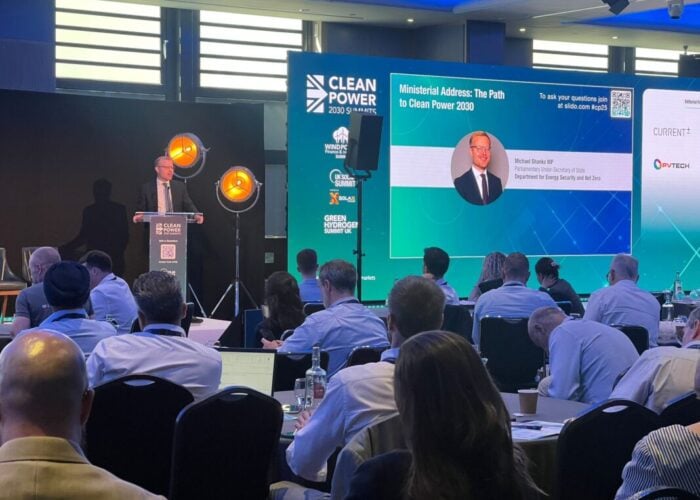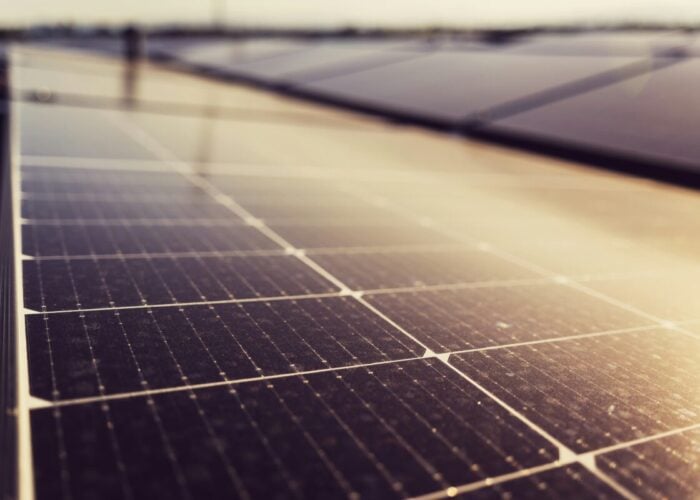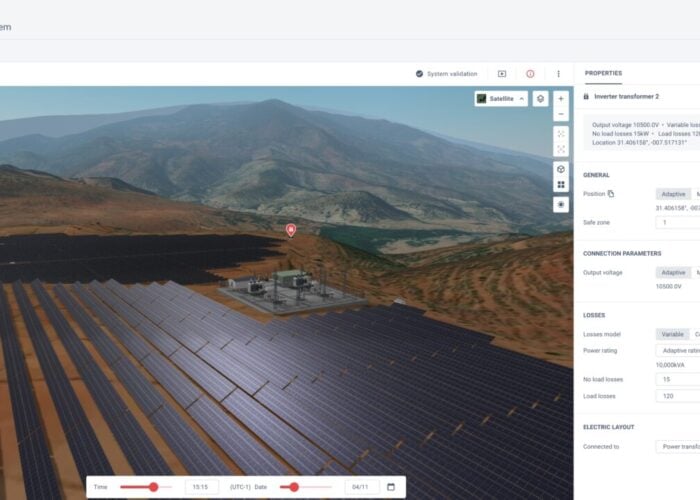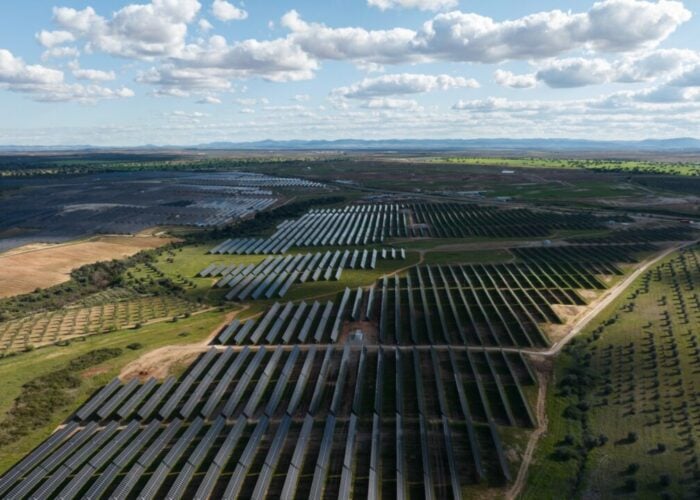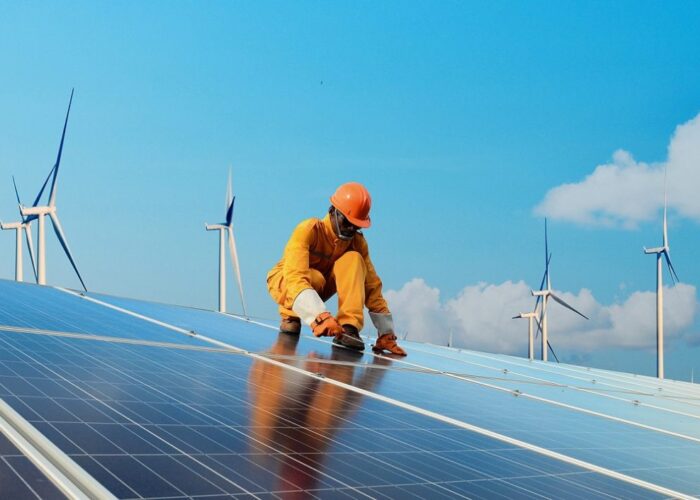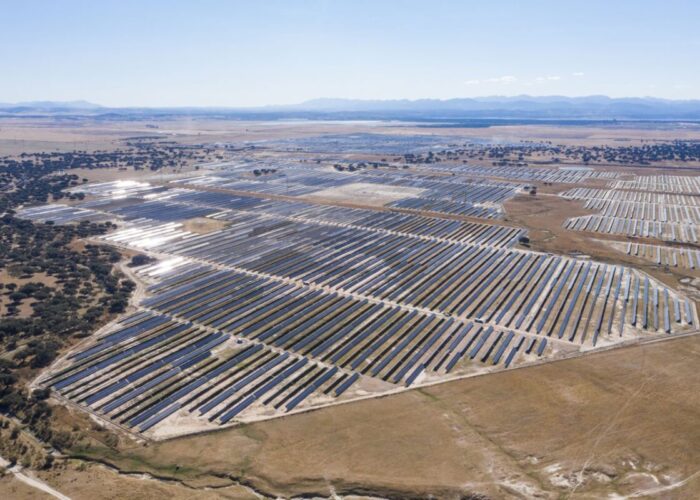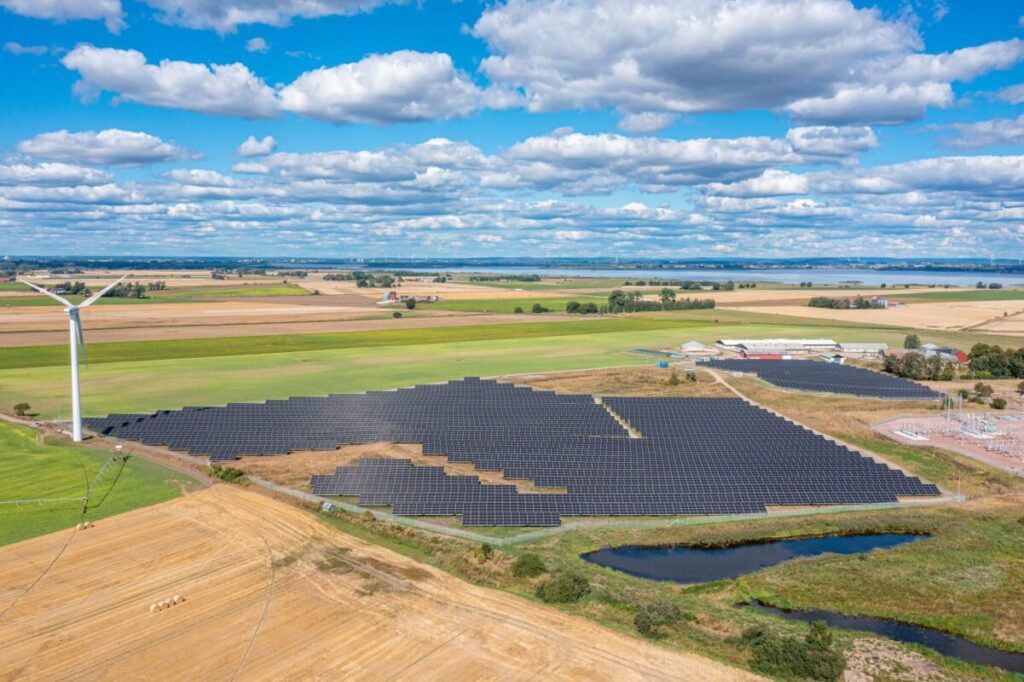
George Heynes charts the key market developments in the EU countries of Northern Europe, as well as non-EU members, Norway and the United Kingdom.
The Republic of Ireland was one of seven EU-27 countries with an operating solar capacity below 1GW as of the end of 2023, with 0.9GW installed in total, though it is worth noting that in February 2024, ESB Networks, which builds and maintains Ireland’s electricity transmission system, confirmed the 1GW mark had been reached. Despite this, the country has already achieved its original national energy and climate plan (NECP) target of having 0.4GW of installed solar capacity by 2030, which led to an increase in its target to 8GW last year. This was introduced as part of its Climate Action Plan 2030. There has been a rapid increase in recent years, with the country having a cumulative installed capacity of 170MW at the end of 2022, meaning 730MW was added throughout 2023.
Unlock unlimited access for 12 whole months of distinctive global analysis
Photovoltaics International is now included.
- Regular insight and analysis of the industry’s biggest developments
- In-depth interviews with the industry’s leading figures
- Unlimited digital access to the PV Tech Power journal catalogue
- Unlimited digital access to the Photovoltaics International journal catalogue
- Access to more than 1,000 technical papers
- Discounts on Solar Media’s portfolio of events, in-person and virtual
Under this same plan, it intends to have an installed solar capacity of 5GW by 2025, requiring a rapid acceleration of deployment, something the country has already showcased through its 2023 installation figures.
According to the Sustainable Energy Authority of Ireland (SEAI), in 2022, the country had 0MW of solar installed. With over 1GW installed now, ESB has dubbed solar the “fastest growing renewable power source in Ireland.” This has been unlocked via two changes: removing barriers for rooftop solar and showcasing a route to market for emerging utility-scale ground-mount solar.
Nordics
Despite being regarded as one of the coldest regions in Europe and with fewer hours of sunlight than other areas, the Nordics region continues to pave the way forward not only for solar but renewable generation in general, owing to its vast natural resources.
Denmark, Sweden and Finland are the key EU markets within this subregion, while Norway earns an honourable mention as a significant non-EU market within the subregion. Of these markets, Denmark has the most installed solar capacity, having reached 4.9GW in 2023. This is closely followed by Sweden with 4.5GW, Finland with an installed capacity of around 1GW and Norway, with around 0.6GW at the end of the year.
Although trade body SolarPower Europe (SPE) detailed in its 2023 EU Market Outlook report that Sweden and Denmark were both anticipated to be among the top 10 markets for solar in Europe in 2023, stuttering capacity additions that year meant that both missed out. Denmark, which was ranked in the top 10 for additions in 2022, was replaced in 2023 by Austria and Belgium.
Denmark
Denmark had a somewhat disappointing year. The Nordic country saw a 57% drop in new capacity additions to 0.7GW in 2023, meaning its capacity only increased to 4.9GW, securing the 11th spot. Despite this, it is worth noting that Denmark ranks third for installed solar power per capita with 832W/c—a 17% increase from 713W/c in 2022.
SPE’s report also mentions that “clouds are on the horizon” in terms of political support for solar in Denmark. According to the report, Denmark’s solar boom has heavily depended on utility-scale, subsidy-free projects. However, introducing higher grid connection fees in January 2023 caused a notable slowdown in this segment. As a result, there was a significant market decline in 2023, which is expected to continue into 2024 Although SPE anticipates that the issue will be resolved, its report said this may take a couple of years for the market to recover to its previous levels.
Denmark is also making good strides towards achieving its NECP targets, which the country updated in 2023. Under this target, the country aims to have 11.7GW of solar capacity installed by 2030.
Sweden
For Sweden, 2023 marked a strong year. After finishing 2022 with 960MW of new installed capacity, 2023 saw installations pick up to 1.6GW. This brought Sweden to a total cumulative installed capacity of close to 4.5GW at the end of 2023.
The solar power market in Sweden has experienced steady growth over the years. Although it started from a low level in the first half of the last decade, it reached an annual capacity of over 100MW for the first time in 2017.
As of the end of 2022, the total installed capacity was approximately 2.8GW. However, despite this growth, solar power still accounts for a very small percentage of the country’s overall electricity mix, and it’s expected to reach only 2% by 2023.
According to the SPE report, there is a case to be positive for solar in Sweden with the local population being “more optimistic” about solar power compared to other energy sources. The report stated that “80% of the Swedes want more investments in solar”, and politicians at the local level are just as positive about solar.
The demand for solar and batteries increased significantly in 2022 and the beginning of 2023 due to the energy crisis in Europe and Russia’s invasion of Ukraine. However, the market has slightly decreased during the second half of 2023 and is now at the same level as it was at the beginning of 2022.
Although the market growth has slowed, it is still at a historically high level. In Sweden, the solar market is primarily driven by the residential sector, which accounts for approximately 57% of the total capacity by the end of 2022. The commercial and industrial (C&I) segment follows closely with about 37%, while the utility-scale market represents only 6% of the cumulative capacity.
Finland and Norway
Turning our attention to the rest of the Nordics through Norway and Finland, both of these markets saw growth throughout 2023 and continue to support the rollout of renewables despite geographical limitations.
Finland reached a key milestone—having a cumulative installed solar capacity of 1GW. In 2023, it joined several other EU member states, including Slovenia, Lithuania and Estonia, in having achieved this. As such, the country added a total of 400MW across 2023.
Finland also has an NECP target of 2.8GW for 2030, which was updated in 2023 from the pre-established target of 1.2GW, a near doubling of the original target. However, it is worth noting that this is low in terms of W/capita, with 503W per person, significantly below the EU average.
Norway, meanwhile, added 300MW of new capacity in 2023 and ended the year with 597MW of cumulative capacity installed. This is substantially more than in 2022 when the nation installed 152.7MW.
About half of the 0.6MW capacity is installed in households; the rest is for industrial and commercial purposes, with only very limited utility-scale capacity.
Norway’s 2030 target is to produce 8TWh of solar energy annually, with an overall renewables target of 40TWh.
Baltics
In the northeast of Europe, the Baltic states saw growth throughout 2023, with several key milestones reached.
Of the three countries in the Baltics, Lithuania and Estonia both now have a cumulative installed capacity exceeding 1GW (1.1GW each), whereas Latvia had an installed capacity of 300MW at the end of 2023 Latvia is also the only Baltic state not to have an NECP target for solar but has set a contribution to the EU renewable energy target of at least 45% in the gross final consumption of energy for 2030.
In terms of NECPs, Lithuania raised its initial target of 0.8GW of solar to 5.1GW in 2023, a five-fold increase, whilst Estonia raised it from 0.4GW to 1.2GW. As such, Lithuania is aiming to have the most installed solar capacity by 2030 in the Baltic region. Under the current target, SolarPower Europe expects Estonia to achieve its NECP target in 2024. Lithuania, on the other hand, is expected to reach its ambitious target after 2027.
Lithuania
Lithuania is expected to reach 55% renewable energy by 2030. The electricity sector is anticipated to see a much more substantial increase, with the country expected to reach 100% electricity from renewable energy sources (RES-E) by 2030.
Interestingly, the country is anticipating installing the “lion’s share” of new solar PV capacity between 2023 and 2025, with this expected to amount to around 3.6GW. Although it has a target to deploy 5.4GW of solar by 2030, there has not been a breakdown of what will be rooftop and ground-mount PV. According to the International Renewable Energy Agency (IRENA), the country added 568MW of new solar capacity in 2023.
It is worth mentioning that Lithuania has several support schemes that have been introduced and are actively enabling the rollout of solar. The country’s renewable plan details information on a tender for renewables in marine areas of the Baltic Sea, with the first expected delivery of electricity by 2028. The plan also detailed support schemes for the commercial and industrial sectors, as well as for the public sector, with the planned intervention of EU funding. However, this financial package does not determine how much will be allocated to ground-mount PV.
As utility-scale solar farms begin to ramp up in Lithuania, there will be a major opportunity for the co location of battery energy storage systems (BESS) to facilitate this expansion of variable technologies. Lithuania’s NECP details plans to develop a capacity mechanism to support demand response and storage but does not provide any details on the support of demand response or the total expected battery capacity.
Estonia
Much like Lithuania, Estonia has a cumulative installed solar capacity of 1.1GW and now ranks fifth in Europe for solar capacity per capita in 2023, with 803W/c.
In terms of NECPs, it is worth mentioning that Estonia achieved its original solar target in 2022, alongside Ireland, Poland and Sweden. The result saw it increase its target to 1.2GW, with SolarPower Europe anticipating the country achieving this in 2024. Consultancy Black and Veatch indicated that the country had an installed capacity of 506MW in 2022, thus meaning 594MW was added in 2023.
Although Estonia has established a new NECP target to reach 65% renewable energy by 2030, higher than the previously established 42%m the country foresees a total solar PV capacity of 1.2GW for 2030. As noted in the 2023 EU Market Outlook report, this target appears low, especially as the nation reached the previous target of 415MW in 2022 and is below the W/capita EU average.
It is worth noting that this is not expected to deter investment within Estonia’s solar sector. SolarPower Europe estimates that the country has the potential to reach 4.8GW of solar capacity by 2030. Several support schemes in the nation are in place to enable this scale-up.
For instance, Estonia plans to replace direct support for renewable energy with lower bid systems, with 500GWh touted for 2024 and 2025. The next major step for Estonia will be the synchronisation of the Baltic states’ electricity system in the synchronous area under EU law around 2025.
Latvia
Located between its Baltic neighbours, Latvia has also seen a successful year for solar installations. The country has already met its 2030 solar target, albeit this is the lowest of the Baltic countries, with 300MW installed as of the end of 2023 despite a tripling of 2022’s 100MW capacity.
The country had 56MW installed solar capacity in 2022, meaning that it added 244MW throughout 2023.
Although the cumulative capacity is dwarfed by that of its neighbours, there is huge potential for developers to take advantage of utility-scale solar projects. This has already seen a number of companies exploring opportunities to develop large-scale solar farms.
For instance, in August 2023, renewables developer European Energy stated that it would build a 115MW solar PV project in Latvia, which it said would be one of the largest projects in the country. The project is set to be completed and connected to the Latvian grid in 2025. It will be near the town of Brocēni in the western part of the country and generate a projected 120,000MWh of power annually.
The same year, developer Green Genius said it plans to build a 100MW solar PV project in Latvia, its first in the Baltic country. In May 2024, a 13.3MW solar farm, the country’s “largest to date” was completed in Kalkūne parish, Augšdaugava municipality, by Saules Energy.
With the number of solar farms growing, as well as the generation capacity of these, it is clear to see why the Baltic countries continue to become under the spotlight by solar developers.
Non-EU markets
Although no longer part of the EU, the UK remains a key solar market within the European continental area. Last year saw some critical milestones achieved on the UK’s pathway to the government’s target of 70GW by 2035.
In 2023, 1.1GW of new capacity was added in the UK, taking its cumulative total to around 17GW, according to trade body Solar Energy UK. In addition, also by the end of 2023, a further 16GW of solar farm proposals had been granted planning permission and a grid connection, and another 9GW of projects were being considered for planning. The UK’s solar sector boasts 90GW of projects in its pipeline.
Growth is anticipated to continue through much of 2024 and throughout the rest of the decade, but the extent of this growth will likely be determined by the results of the recent general election.
Solar is a core pillar of the UK’s goal of achieving net zero emissions, but although many instantly point towards rooftop solar installations, the true potential for solar can be seen in utility-scale developments in the form of ‘nationally significant infrastructure projects’ (NSIPs).
NSIPs are projects of national significance in England and Wales that bypass the usual local-level planning systems. For solar, any project with a generation capacity over 50MW can be deemed an NSIP.
By bypassing local-level planning, large-scale solar projects are able to be decided by the secretary of state with a development consent order (DCO) granted. The scheme has proven to be a success, with Project Fortress, more commonly known as the Cleve Hill Solar Farm, having entered construction in April 2023. Once completed, the solar farm will be by far the UK’s largest with a generation capacity of 373MW with battery storage to be co-located.
It is worth noting that Project Fortress was the first solar farm to gain a DCO in the UK, paving the way for other large-scale projects to progress. Since then, multiple developers have been looking to create utility solar projects. The biggest we have seen thus far is being explored by UK-based renewables developer Elements Green in Nottinghamshire. Dubbed the Great North Road Solar Park, the project could have a generation capacity of 1GW, the first in the UK to do so.
Alongside the NSIP scheme, another major opportunity can be found through the UK government’s Contracts for Difference (CfD) scheme. To incentivise further investment, in late 2023, the government increased the administrative strike price for AR6 to £61/MWh (US$77.48) for solar—a 30% increase from AR5.

